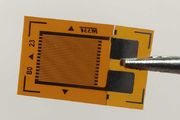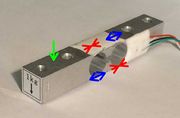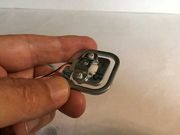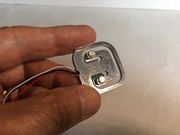Digital weighing scales: Difference between revisions
No edit summary |
|||
| Line 5: | Line 5: | ||
==Principles of operation== | ==Principles of operation== | ||
[[File:Img_1715a.jpg|180px|thumb|left|A resistive strain gauge.]] | |||
[[File:Img_1725a.jpg|180px|thumb|right|A bar-type full bridge load cell.]] | |||
[[File:Img_1727a.jpg|180px|thumb|left|A half-bridge load cell - top.]] | |||
[[File:Img_1728a.jpg|180px|thumb|right|A half-bridge load cell - bottom.]] | |||
See [https://learn.sparkfun.com/tutorials/getting-started-with-load-cells Getting Stated with Load Cells]. | See [https://learn.sparkfun.com/tutorials/getting-started-with-load-cells Getting Stated with Load Cells]. | ||
[[Category:Fixing]] | [[Category:Fixing]] | ||
Revision as of 20:45, 22 August 2017
This page covers digital kitchen and bathroom scales. Digital luggage scales follow the same principles of operation.
Summary
There isn't much to go wrong inside digital weighing scales apart from physical problems which should be visible on close inspection. Nevertheless, their principles of operation is interesting, and an understanding will help diagnose any faults which aren't visually obvious.



